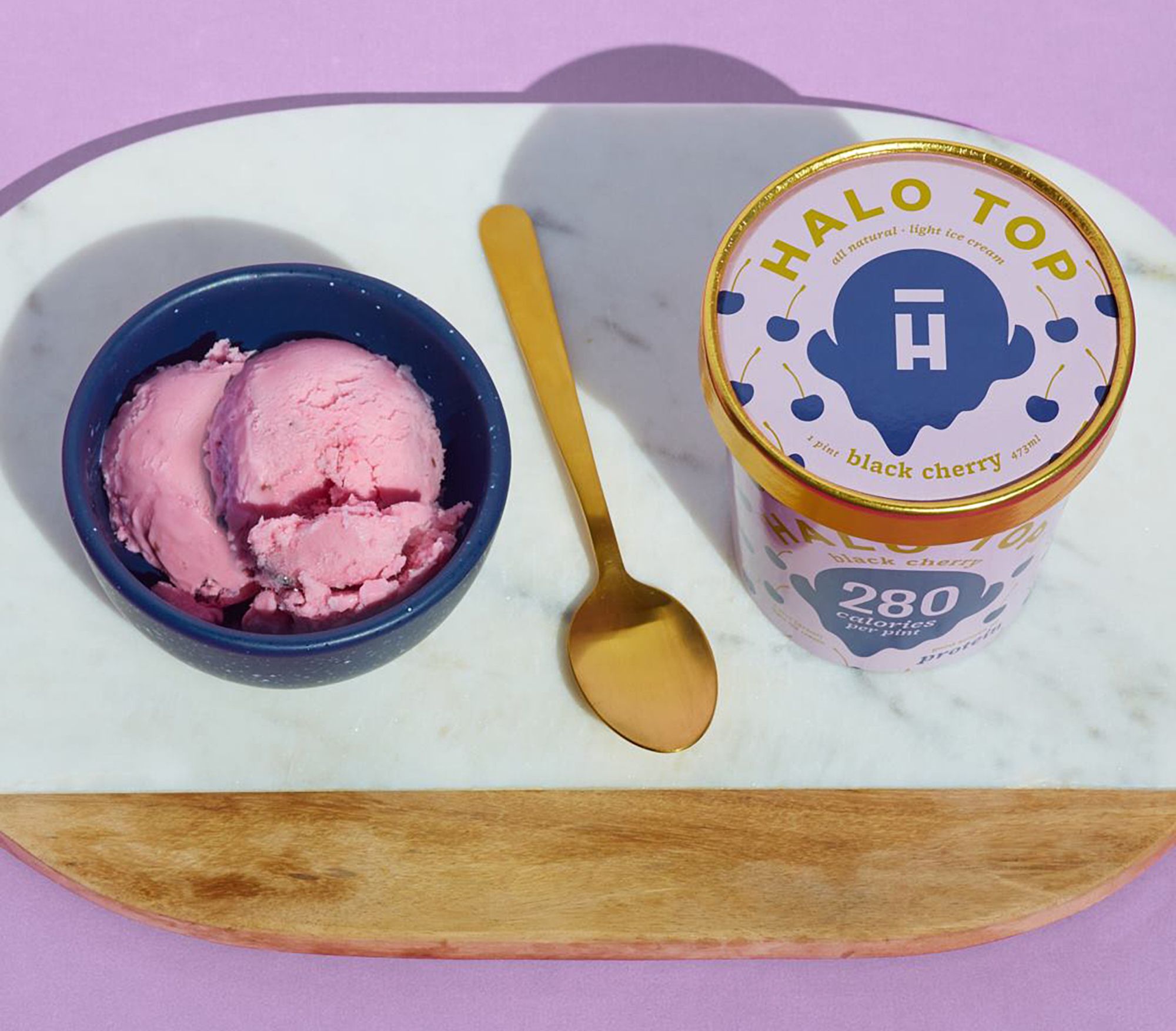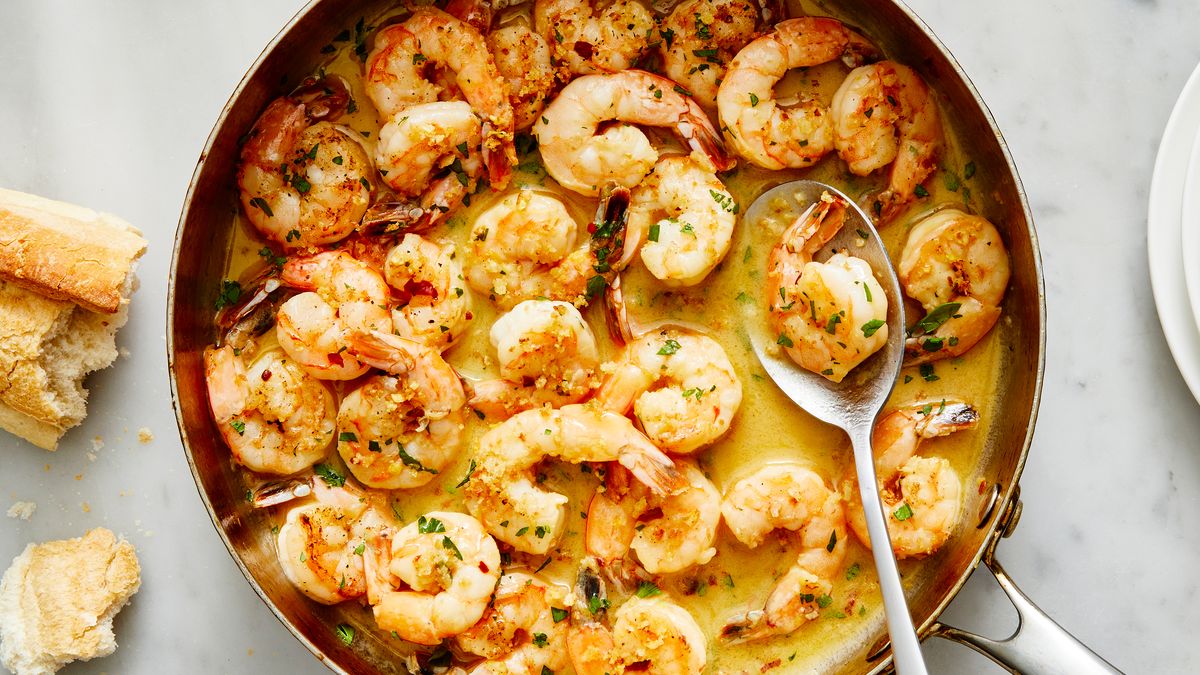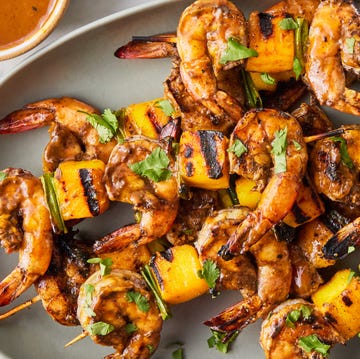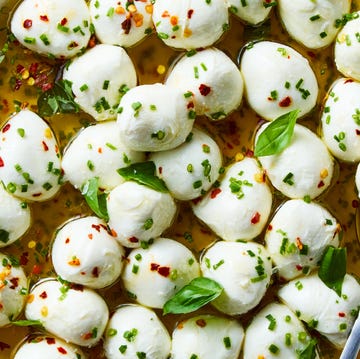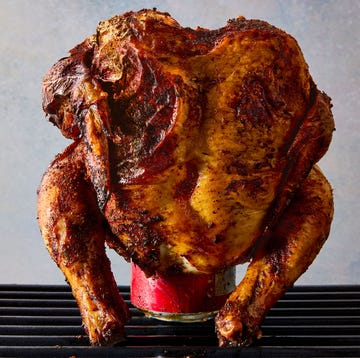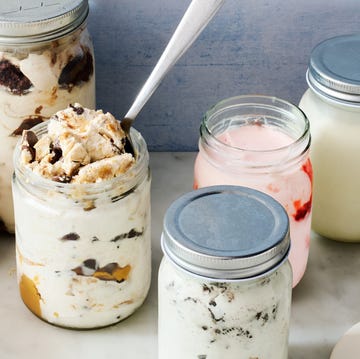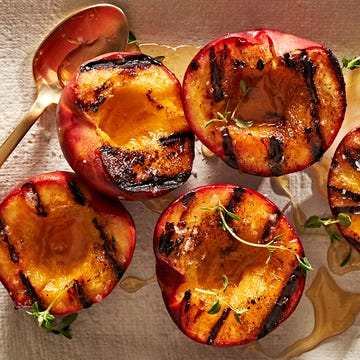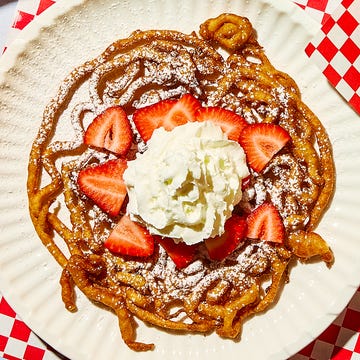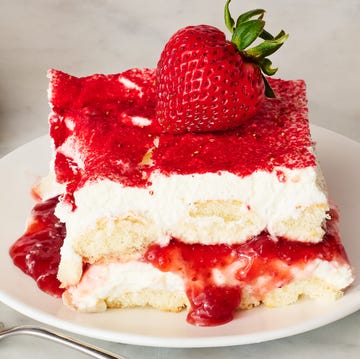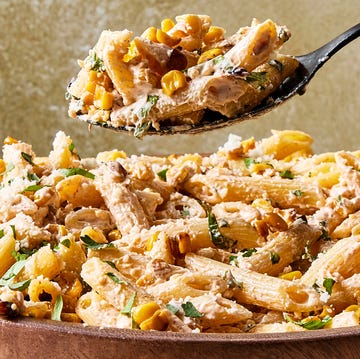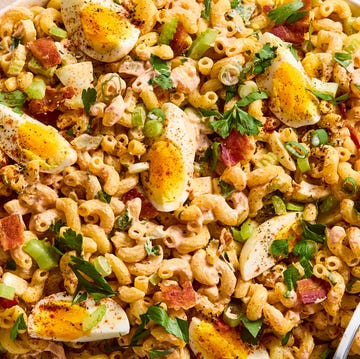It seems too good to be true: Ice cream you can eat by the pint for less than 300 calories. That's as creamy as Häagen-Dazs and packs as much protein as eating three hard-boiled eggs. Oh, and it's low in sugar.
It's no wonder that bikini models and bodybuilders rave about Halo Top's 19 ice cream flavors, or that bloggers like Karen Ray of My Skinny Sweet Tooth keep their freezers perpetually stocked with at least five pints.
"Oh my gosh, I have it three to four times a week," says Ray, of Louisville, KY, who regularly posts photos of the ice cream to her 18,000 Instagram followers. "When I found Halo Top, I was like, oh my god, I need to buy these up. I bought every single flavor and tried a little spoonful of each."
This fledgling ice cream company's a divine intervention for their diets. The majority of its flavors top out at a mere 280 calories in an entire pint, whereas other brands pack in that many calories per 1/2 cup serving. You know that awful feeling when your spoon hits cardboard at the bottom of a tub and you realize you've eaten waaaay more than intended? Imagine a world without that guilt, where you can eat ice cream every night without worry. Halo Top's branding suggests heaven for a reason.
To be fair, the brand isn't the first healthy ice cream, but it's quickly become the bestselling pint in America, surpassing Häagen-Dazs and Ben & Jerry's. After launching in 2012, Halo Top's sales jumped 2,500 percent between 2015 and 2016, thanks to word of mouth and social media. The low-cal creamery pulled in $132.4 million last year.
Aside from Halo Top, there's Enlightened (high-protein and high-fiber), Arctic Zero (lactose-, gluten-, and GMO- free), Wink Frozen Desserts (only plant-based ingredients, no sugar, no dairy), So Delicious Dairy Free (dairy-, gluten-, GMO-free). Even the big brands are getting in on the action: Breyers will start selling a similarly packaged low-calorie, high-protein ice cream this August, and Kroger's introduced a Low Cow line (also low-cal, non-GMO, gluten-free and low fat). It's a lot of buzzwords, but does that make the food safe? Is healthy ice cream too good to be true?
Justin Woolverton doesn't think so.
It All Started With One Guy Who Was Really Sick Of His Job.
Woolverton's the CEO of Halo Top, and he spent years working out the recipe in his kitchen. The 37-year-old wasn't starting a business; he just wanted a snack. "I don't do well on sugar," says Woolverton, who's had blood sugar issues in the past. "I got into ice cream because I was really making it for myself."
He wanted the creamy sweet satisfaction of ice cream, but without the sugar bomb to his body. Woolverton whipped together Greek yogurt and berries until he got sick of that trademark sour tang, then kept experimenting (with help from an ice-cream instruction book off Amazon). He landed on a treat he liked himself, but he still didn't see any business potential.
Fortunately, misery is the other mother of invention. "I was very unhappy being a lawyer and I needed to escape. I realized I was eating this way because of my own sugar issues, and [that] other people had started eating that way. I had this ice cream that was pretty good — I was going to run with this," he says. "Being a corporate lawyer, you don't have ownership of anything. I wanted my own thing."
After a few years of hitting the books, scheduling meetings, and bringing on a business partner, Woolverton got his big break when Whole Foods signed on to distribute Halo Top in 2013. "Whole Foods for us was a huge victory. They've been integral to what Halo Top has become," he says. "When I made the first iteration of Halo Top, I was walking up to my Whole Foods two blocks away and using ingredients from [them]. When I had sales calls, I definitely told them that!"
The love affair is mutual, says Whole Foods. "Halo Top resonates with Whole Foods Market shoppers because they're not only making a great tasting ice cream, but they're also hitting several nutritional notes — high protein, low calorie, low sugar and low fat — while also meeting our quality standards of no artificial colors, flavors or preservatives," says Eric Cusimano, the global category manager for the Whole Foods grocery team, who oversees frozen goods. "Their success has created a whole new ice cream segment!"
Forget Kanye — Instagram Made This Ish Famous.
But even placement in Whole Foods can't completely explain how the brand exploded in 2016. Their lack of traditional advertising has the industry scratching their heads. "Facebook and Instagram got really advanced tools when we were coming up, so you could target people who you thought would be really into Halo Top: fitness [fans], diabetics, people who love ice cream," he says. Halo Top focused their marketing on these targeted digital ads, instead of broad commercials or newspaper ads that would fall into the ether.
The brand hit the motherlode with fitness bloggers and Instagram influencers like Ray.
"We think everybody who's going to try Halo Top is going to love Halo Top," says Woolverton. "So anyone who shows any interest in ice cream, we try to get in touch with them and say, 'Hey, here's a coupon, go try one on us.'"
"It's nice if someone has a big following, but we're not chasing Kardashians or anything like that," he laughs.
More than 100,000 photos have been tagged with #halotop on Instagram, and in some cities where the brand is harder to come by, fans will post their "hauls" of Halo Top, when they buy many pints at once. "The best one I ever saw — I wish I could remember the handle — a guy was at Costco and he was wheeling out like 20 cases," Woolverton says. "It was awesome, but I also just want to find him and ask him, 'Where did you store all of that ice cream?!'"
"I probably don't eat it as much as I could or should," says fitness blogger Kim Meyer. "I probably have six pints in the freezer now."
Meyer picked up Halo Top because she cares about what she puts in her body, and she liked what she saw on the label. "It seems healthy. There's one thing in it, erythritol, but from what I found it's not as bad as some of the other chemicals in food. I'm not an expert by any means," she admits.
Is This Crazy-Popular Treat Actually Good For You?
The experts have strong feelings about Halo Top, as well — but they're not exactly positive.
"This is just repackaging more chemicals and more fake food. It's the same bull crap!" says Boise, Idaho-based nutritionist Christy Nickel. "I absolutely do not let my clients eat this. It's still junk food. It's just less junky."
The main concern for the nutritionists we spoke with is all of the sugar in Halo Top. "Organic cane sugar? C'mon. It's sugar," says Rovenia Block, nutritionist and author of the upcoming Lose Your Final 15. "Even stevia comes from a plant, but by the time it goes into a product it's processed. You can't say it's not processed. You have to change the product itself to get the benefits you want from the product you're adding it to. Stevia is a plant that's, oh, 60 times sweeter than cane sugar. It's wonderful as a plant — you can put the leaves in ice tea — but when you chemically treat it into a powder, now it's a chemical."
Block also points out that Halo Top lists several different types of sugar in their ingredient list, but doesn't include them in the grams of sugar in their nutritional info. "There's five grams of sugar, and five grams of sugar alcohol — that's 10 grams of sugar per serving, and that's not healthy," Block says. "That means 40 grams of sugar in a pint." That's about the equivalent of a can of regular Coca Cola.
"They're using chemical sweeteners, stevia, things like that. They're still using shelf-stable ingredients I can't pronounce," Nickel notes, trying to sound out erythritol over the phone. (Erythritol is a sugar alcohol that doesn't cause the spike in blood glucose levels that regular sugar does — and it has a fraction of the calories, according to the FDA.)
There are other items on the ingredient list that concern nutritionists. "You get protein from milk and eggs, and here they're giving you this milk protein," Block says. "Milk protein concentrate is a powder. It's basically how you do powders for shakes and smoothies — that's what this is."
Block calls the famous Halo Top packaging "misleading" and "sneaky," noting that the giant numbers for protein are per pint, and the sugar is per serving. "You have to eat the entire pint to get that [20 grams of] protein," she notes.
It All Comes Back To One Thing: Moderation.
The nutritionists advise just making your own ice cream if you really have a craving, which is … unrealistic at best, laughable at worst.
"I have a questionnaire I have clients fill out. It dives into what the root problem is. Why do you think you can't keep off ice cream?" says Nickel. "They say, I have a sweet tooth. That's an addiction, like any other drug. But it's not just you! It's your brain being manipulated by the sugar in your food."
But what a delicious dependency.
As with so many other wonderful vices in the world, the answer to the Halo Top question may be "moderation." No one should be eating a pint of ice cream every day, even if it's not as bad, as sugary, or as fattening as typical ice cream. Like diet soda instead of regular soda, you know you shouldn't, but it's better than the alternative.
And that, it seems, is the secret to "healthy" ice cream's success.
Follow Delish on Instagram.
